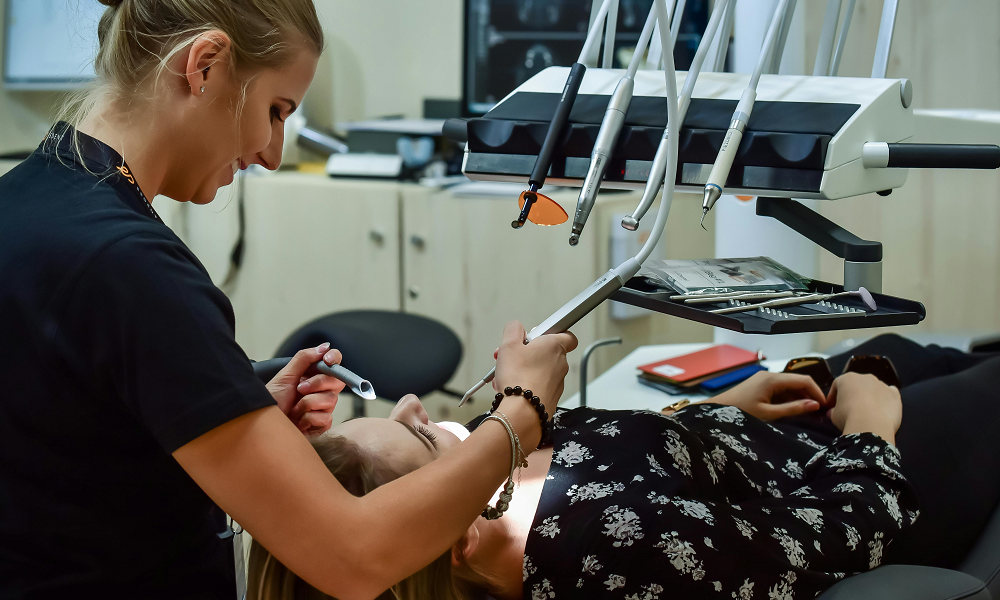Reviews
What’s the Impact of New Dental Regulations on Patient Care

Over the past few years the dental practice industry has gone through many changes by way of legislation all with the pure intent of raising the standards and the safety of the dental practice for patients. These new regulations, which rely on the trends in health care and dentistry, have significant effects for both the patient and the dentist. To successfully cope with these changes in the field of dental care, it is important to comprehend them and their implications whether you are a patient or dental provider. This article focuses on explaining how these new regulations will impact different areas of dentistry and practice.
Overview of New Dental Regulations
New changes in regulations governing the delivery of dental care services are formulated to cover a number of key aspects of dentistry, such as safety of patients, quality of treatment, and organizational processes. These regulations are usually thrown in to tackle new challenges like amplified concerns for disease transmission and enhanced patient privacy concerns.
For example, new changes may cover increased standards of sterility in relevant procedures, refined policies regarding the treatment of client information, and additional specifications on the care and preservation of dental tools and apparatus. These updates are meant to bring into the dental practices a set of guidelines to follow to enhance patient treatment by reducing risks and enhancing treatment outcomes.
Impact on Patient Care
The new regulations are significant as far as patient care and treatment is concerned mainly due to adherence to new safety features as well as changes in treatment protocols. For example, compliance with enhanced infection-control measures is now required, an intervention that can strongly diminish the risk of acquiring a healthcare-related infection.
Patient may also observe differences in how procedures are implemented with an increased use of research findings to support the medical procedures. These innovations envision that dental procedures should not only be made more effective but also safe. Furthermore, it may be found that regulations require that dentists and other healthcare providers communicate to their patients, particularly regarding their treatment and the potential risks involved.
Effects on Dental Practices
The new regulations imply a significant shift in dental practices, as the following sections of this paper illustrate. Facilities may need to purchase new equipment or modify existing technology that is utilized in clinics to meet the guidelines of the current requirements. For instance, new sterilization technologies or digital record keeping may be needed as part of change.
Education is another important factor because both dentists and their personnel have to know these new procedures and guidelines. This change process may be expensive in terms of financial and time requirements for the healthcare organization. However, these adjustments are supposed to make practices better and to ensure that any practices that are being undertaken within a particular domain of dentistry are well standardized and well-coordinated so as to have a positive impact on the lives of the patients involved.
Patient Reactions and Concerns
The following are possible patient reactions to the new regulations: Some may appreciate the additional precautions and increased quality, reassuring that their treatment is performed according to the highest protocols. However, they may also have worries about the possibility of higher fees or their normal schedule being interrupted. It requires dental practices to respond to these concerns through clear communication. Dentists should spend some time explaining to their patients how these alterations will somehow affect the patients for the better and what the change entails. Being more specific and reacting to patients’ concerns may ease their anxieties towards the new care protocols.
Legal and Ethical Considerations
New dental regulations also present legal/ethics questions as well. For example, how are these regulations consistent with the current healthcare laws and policies regarding the patient’s consent and privacy? The new regulations present dentists with these considerations to observe to guarantee that their offices are lawfully permitting yet ethical.
This involves being Open about the manner in which treatment is determined and the way they manage patient information. Some ethical concerns might emerge due to rules that clash with patient characteristics or desires, which means that the dentist needs to pay heed to rules while considering patients’ needs.
Expert Opinions
Opinions from the dentists and other authorities to support the necessities of the new regulations are also important. These changes are generally welcomed by dentists since they understand the direction towards increasing attention to patient safety and care quality.
They may focus on certain advantages, for instance, where technology has improved or that the training has become harder. On the other hand, some of the professionals may question the feasibility of meeting the new standards or argue that there are lacunas in the regulations. These different viewpoints also provide a more well-rounded view of how the regulations are influencing the dental industry.
Comparative Analysis
Comparing the new regulations with the previous ones or to the other regions may help to provide some context and possible showcases of significant shifts. For instance, if the updated regulations have been compared with older guidelines or with regulations from other countries, disparities in relations to method and efficacy can be distinguished.
Such comparisons assist in evaluating the extent of improvement in dental care and or areas that may require additional improvement. To the dentists and patients, these differences give a better understanding of the contemporary developments and their implications on practices.
Future Implications
Further improvements in the quality of the care and safety measures that patients will receive can be expected in the future. In the case of regulation updates, what it means for the profession will be relevant for the dentists as they will strive to remain relevant in providing the best dental services.
In the future, the trend is likely to feature fluctuations in the policies that govern the healthcare sector and the evolution of practices to enhance the delivery of services to the patients.
Advice for Patients and Practitioners
Patients should get information from their dental providers regarding how these changes will impact them. Knowledge of the advantages and possible changes of their treatment regimens can be a source of comfort for patients.
Therefore, dentists must make an effort to familiarize themselves with the changes in the law and acquire the appropriate resources and training required to stay in line with these rules and provide the best care possible. To minimize the effects of these changes, active measures will be taken to ensure that practices remain compliant with the regulations while promoting quality patient care.
Conclusion
To sum it all up, these changes signify nothing less than the emergence of new dental laws and Hold substantial consequences for anyone involved in professional dental care. However, these regulations were set to improve safety and quality of care but they equally pose some difficulties that need to be navigated.
By recognizing and managing these changes, patients and dental care delivery team members will be better positioned to create positive effects from the changes and translate them into better patient care and dental care. It is important; however, continued attentiveness and flexibility will be more crucial as the field advances into the future of dental practice.

-

 World1 week ago
World1 week agoEthiopian volcano erupts for first time in thousands of years
-

 Health1 day ago
Health1 day ago8 kittens die of H5N1 bird flu in the Netherlands
-

 Legal6 days ago
Legal6 days agoUtah Amber Alert: Jessika Francisco abducted by sex offender in Ogden
-

 US News5 days ago
US News5 days agoExplosion destroys home in Oakland, Maine; at least 1 injured
-

 Health6 days ago
Health6 days agoMexico’s September human bird flu case confirmed as H5N2
-

 Legal3 days ago
Legal3 days ago15 people shot, 4 killed, at birthday party in Stockton, California
-

 World6 days ago
World6 days agoWoman killed, man seriously injured in shark attack on Australia’s NSW coast
-

 Health5 days ago
Health5 days agoMarburg outbreak in Ethiopia rises to 12 cases and 8 deaths




